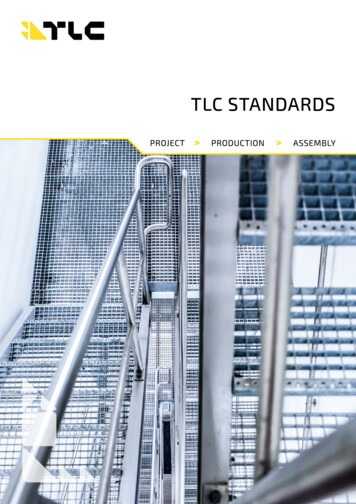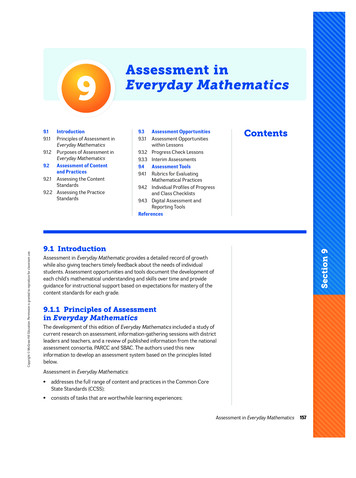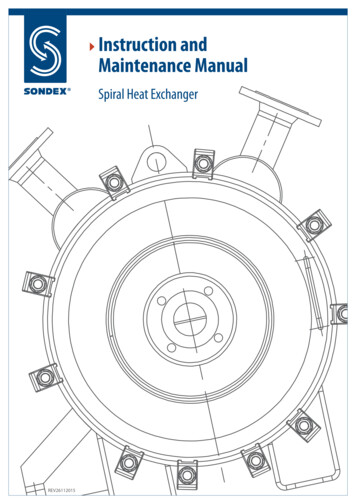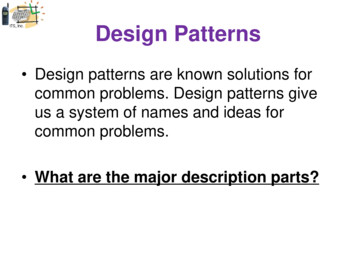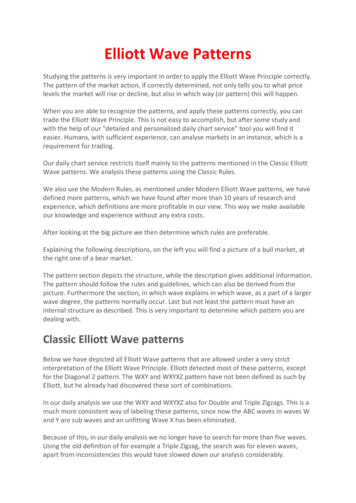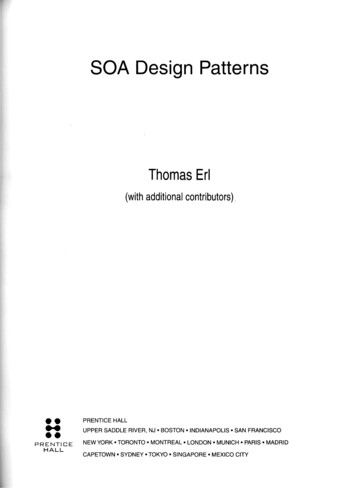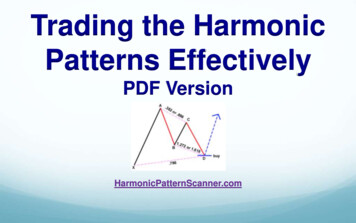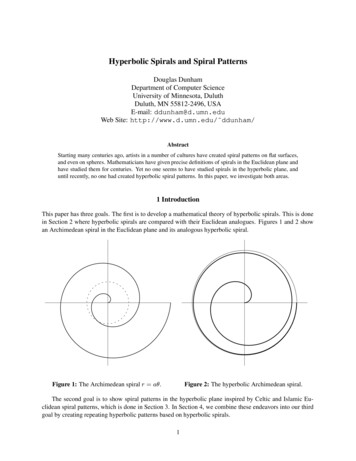
Transcription
Hyperbolic Spirals and Spiral PatternsDouglas DunhamDepartment of Computer ScienceUniversity of Minnesota, DuluthDuluth, MN 55812-2496, USAE-mail: ddunham@d.umn.eduWeb Site: http://www.d.umn.edu/ ddunham/AbstractStarting many centuries ago, artists in a number of cultures have created spiral patterns on flat surfaces,and even on spheres. Mathematicians have given precise definitions of spirals in the Euclidean plane andhave studied them for centuries. Yet no one seems to have studied spirals in the hyperbolic plane, anduntil recently, no one had created hyperbolic spiral patterns. In this paper, we investigate both areas.1 IntroductionThis paper has three goals. The first is to develop a mathematical theory of hyperbolic spirals. This is donein Section 2 where hyperbolic spirals are compared with their Euclidean analogues. Figures 1 and 2 showan Archimedean spiral in the Euclidean plane and its analogous hyperbolic spiral.Figure 1: The Archimedean spiral .Figure 2: The hyperbolic Archimedean spiral.The second goal is to show spiral patterns in the hyperbolic plane inspired by Celtic and Islamic Euclidean spiral patterns, which is done in Section 3. In Section 4, we combine these endeavors into our thirdgoal by creating repeating hyperbolic patterns based on hyperbolic spirals.1
2 A Theory of Hyperbolic SpiralsTo display a hyperbolic spiral, we must first choose a (Euclidean) model of hyperbolic geometry, sinceas has been known for 100 years, there is no smooth distance-preserving embedding of hyperbolic geometryin Euclidean space. The Poincaré circle model suits our needs best because (1) it lies entirely within abounding circle in the Euclidean plane (allowing the entire hyperbolic plane to be shown at once), and (2)it is conformal — the hyperbolic measure of an angle is equal to its Euclidean measure. In this model,the hyperbolic points are the interior points of the bounding circle and the hyperbolic lines are interiorcircular arcs perpendicular to the bounding circle, including diameters. Distance is measured in such a waythat equal hyperbolic distances are represented by ever smaller Euclidean distances toward the boundingcircle. For convenience, we assume that the bounding circle is a unit circle centered at the origin of theEuclidean plane, and that the origin of the hyperbolic plane is represented by the Euclidean origin. In fact,if is the hyperbolic distance from the origin then the Euclidean distance from the origin, is given by Ü Ü , where is the hyperbolic tangent function: Ü Ü Most of the common Euclidean spirals are given in polar coordinates by equations of the form: .So one natural way to define a corresponding hyperbolic spiral (in hyperbolic polar coordinates) would be: which would then be represented as: in the Poincaré model. One of the simplest andmost widely drawn Euclidean spirals is the Archimedean spiral given by: . Two turns of this spiralare shown in Figure 1 where , and . In our pictures of Euclidean spirals, we show the unit circle (in a dashed arc) for comparison with the corresponding hyperbolic spiral, which of coursemust be contained within the bounding circle. Figure 2 shows our hyperbolic version of this spiral, given by . TheMore generally, a power spiral is given by the equation: , where we assume Archimedean spiral is the special case where . If , we obtain another special case, the Fermatspiral. Figures 3 and 4 show two turns of the Fermat spiral and its hyperbolic counterpart.Figure 3: The Fermat spiral .Figure 4: The hyperbolic Fermat spiral.2
If , we obtain the reciprocal spiral. It is also often called the hyperbolic spiral since is the equation of a hyperbola (if and are interpreted as Cartesian coordinates), but we wish to avoidconfusion with the other use of the word “hyperbolic” in this paper, so we use the term “reciprocal” instead.Figures 5 and 6 show three turns of the reciprocal spiral and its hyperbolic counterpart. Note that thereciprocal spiral (but not its hyperbolic counterpart) has a horizontal asymptote .Figure 5: The reciprocal spiral .Figure 6: The hyperbolic version of the reciprocalspiral. If , we obtain the lituus curve, . Figures 7 and 8 show three turns of the lituusand its hyperbolic counterpart. The lituus is not technically a spiral since its curvature is not a (strictly)increasing or decreasing function of its arc length, as can be seen on the right of Figure 7 by the inflectionand in the “tail”, which is asymptotic to the -axis. The inflection point occurs where Æradian (about ). Similarly, the circle ( ) is not technically a spiral either, since itscurvature is constant., andThe equation of a exponential spiral is given by the equation: , where we assume . It is also often called logarithmic spiral. The golden spiral is the special case in which ,is the golden section. Figures 9 and 10 show two turns of the golden spiral and itswhere hyperbolic counterpart. It is related to the following construction. Start with a horizontal golden rectangleand construct a square on top of it, producing a bigger (vertical) golden rectangle. Construct a squareon the left side of the new golden rectangle, producing a bigger (horizontal) golden rectangle. Continuesuccessively constructing ever bigger squares on ever bigger golden rectangles on the top, left, bottom, andright sides in that sequence. A golden spiral can be passed through the diagonal corners of the squares— that is, through the bottom right and top left of the first square, which is the top right of the secondsquare, then through the bottom left of the second square, which is the top left of the third square, etc. Thisconstruction is discussed by Coxeter [Coxeter1], and Swimmer discussed related spirals in his Bridges 2000paper [Swimmer1].The exponential spiral is also called the equiangular spiral since rays from the origin cut it at the sameangle . In fact the equation can be rewritten as (i.e. ). As can be seen in Figure10, our hyperbolic counterpart of the exponential spiral is not an equiangular spiral. But since the Poincar é3
Figure 7: The lituus curve Figure 9: The golden spiral . .Figure 8: The hyperbolic version of the lituus curve.Figure 10: The hyperbolic version of the goldenspiral.4
model is conformal, the Euclidean equation of a hyperbolic equiangular spiral must itself just be the equationof a Euclidean equiangular spiral. Hence the equation of a hyperbolic equiangular spiral in hyperbolic polarcoordinates is just . So to see a hyperbolic equiangular spiral, one can just look at thatpart of the spiral in the interior of the unit circle in Figure 9. Note that unlike the Euclidean case, cannotincrease indefinitely — there is a limiting angle, given by (from solving ¼ ).Finally, we mention that spherical equiangular spirals are called loxodromes or rhumb lines. A loxodrome is the path one would travel on a sphere by keeping a constant heading, i.e. a path that makes aconstant angle with lines of latitude (or with lines of longitude). A loxodrome is the stereographic projection of a Euclidean equiangular spiral onto the sphere.This finishes our discussion of the mathematics of hyperbolic spirals. In the next section, we look atspiral patterns from two cultures and their hyperbolic counterparts.3 Celtic and Islamic Spiral PatternsThe art of many cultures has been enriched by spiral patterns. We will examine two such patterns, onefrom Celtic art and one from Islamic art, and show hyperbolic versions of each pattern. It seemed to havebeen common in Celtic art to form patterns from pieces of a spiral like Fermat’s spiral arranged around acenter to form a circular “medallion” (popular values of were 2, 3, and 4). Then copies of the medallionwere arranged in a (possibly) repeating Euclidean pattern with their spiral pieces connected. Figure 11shows such a pattern with , and -fold rotation centers between the medallions. Figure 12 shows arelated hyperbolic pattern based on the Fermat spiral, with and -fold rotation centers between themedallions.Figure 11: A Celtic spiral pattern.Figure 12: A hyperbolic version of Figure 11.Figure 13 shows an Islamic spiral pattern from the Alhambra. It is a Euclidean tessellation by angularpinwheel medallions with -fold chiral symmetry. Firgure 14 shows a hyperbolic tessellation by similarangular pinwheels with -fold rotation centers. Figures 13 and 14 were shown in Bridges 2001 [Dunham5].The art of several cultures includes spiral patterns made up of “medallions” of spiral pieces, which are thenlinked together to make a repeating Euclidean pattern. We have shown simple examples from two cultures.5
Figure 13: An Islamic spiral pattern.Figure 14: A hyperbolic version of Figure 13.Spiral patterns are often colored and elaborated, almost to the point of obscuring the original spirals. In thenext section, we will look at some simple hyperbolic spiral patterns.4 Hyperbolic Patterns of SpiralsThe patterns in Figures 11 and 12 are not “pure” spiral patterns since the spirals branch at one point, formingtwo arms that connect to two adjacent spirals. Figure 15 below shows a spiral pattern with no such branching.This pattern is based on the regular tessellation 4,5 . Figure 16 shows the tessellation 4,5 (in darkFigure 15: A spiral pattern based on the Fermat spi- Figure 16: The relation between the tessellation 4,5 and the pattern of Figure 15.ral and the tessellation 4,5 .lines) overlaying the pattern of Figure 15 (in light lines). In general, the symbol denotes the regulartessellation by regular -sided polygons with of them meeting at each vertex. Figures 12 and 14 are6
based on the tessellations 6,4 and 7,3 respectively. Regular tessellations are discussed in more detail in[Dunham4].Figure 17 shows an exponential spiral pattern with the spiral pieces connected at the midpoints of theedges of the 4,5 tessellation. Figure 18 shows a pattern based on the spiral of Figure 17 which has beenslightly contracted so that the spiral pieces meet at vertices of the 4,5 tessellation.Figure 17: An exponential spiral pattern based on Figure 18: An exponential spiral pattern with spiralthe tessellation 4,5 .pieces meeting at vertices of the tessellation 4,5 .We finish by showing spiral patterns based on the Archimedean spiral and the reciprocal spiral. Figure19 shows an Archimedean spiral pattern based on the 6,4 tessellation. Figure 20 shows a reciprocal spiralpattern based on the 4,5 tessellation with spiral pieces meeting at tessellation vertices.Figure 19: An Archimedean spiral pattern based on Figure 20: A reciprocal spiral pattern with spiralthe tessellation 6,4 .pieces meeting at vertices of the tessellation 4,5 .7
5 Conclusions and Future WorkWe have surveyed some of the natural hyperbolic spirals, and have used pieces of them to construct repreating hyperbolic patterns. It would seem possible to construct hyperbolic versions of Krawczyk’s spirolaterals[Krawczyk1, Krawczyk2]. It would also seem possible to construct hyperbolic spiral tilings analogous tothose of Gailiunas [Gailiunas1]. Although Euclidean spirals have been studied extensively, there is probablymore work to be done on spherical spirals too. In fact, given the large literature on the subject of spirals,there would seem to be numerous directions for further research.References[Coxeter1] H. S. M. Coxeter, Introduction to Geometry 2nd Ed., John Wiley & Sons, New York, 1969.[Dunham4] D. Dunham, Hyperbolic Celtic Knot Patterns Bridges 2000 Conference Proceedings, pp. 13–22,2000.[Dunham5] D. Dunham, Hyperbolic Islamic Patterns – A Beginning Bridges 2001 Conference Proceedings,pp. 247–254, 2001.[Gailiunas1] P. Gailiunas, Spiral Tilings Bridges 2000 Conference Proceedings, pp. 133–140, 2000.[Krawczyk1] R. Krawczyk, Curving Spirolaterals Bridges 2001 Conference Proceedings, pp. 29–36, 2001.[Krawczyk2] R. Krawczyk, Sculptural Interpretation of a Mathematical Form Bridges 2002 ConferenceProceedings, pp. 1–8, 2002.[Swimmer1] A. Swimmer, The Subtle Symmetry of Golden Spirals Bridges 2000 Conference Proceedings,pp. 113–118, 2000.8
The Poincar e circle model suits our needs best because (1) it lies entirely within a bounding circle in the Euclidean plane (allowing the entire hyperbolic plane to be shown at once), and (2) it is conformal — the hyperbol


